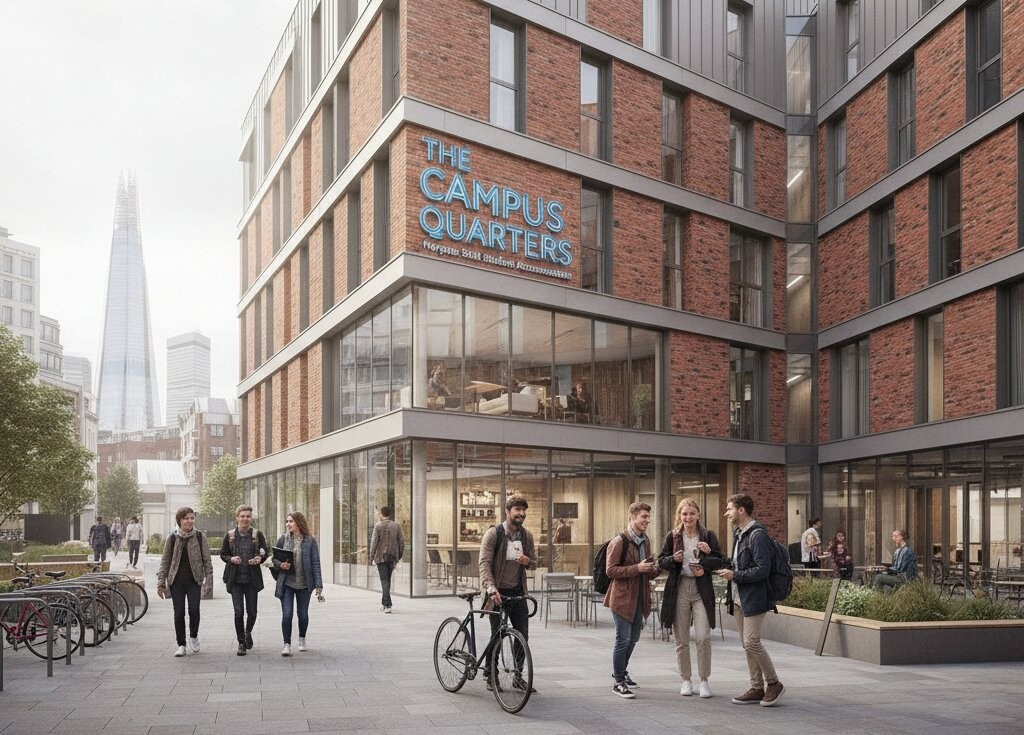The UK’s purpose-built student accommodation (PBSA) sector faces an emerging paradox: unfilled rooms in cities such as Sheffield, despite an overall national shortage of student beds.
According to Cushman & Wakefield’s latest UK Student Accommodation Report, the pattern reflects growing affordability pressures and a shifting student demand profile that is beginning to test the viability of new development.
While the national student-to-bed ratio remains more than two students for every available PBSA bed, the report identifies a growing number of under-occupied developments in certain regional markets.
Sheffield stands out, with demand projected to have fallen by 17.3% between 2022/23 and 2024/25, pushing the city’s ratio down to 1.21:1 – an unprecedented low for a major market and one that has led to the steepest PBSA rent decline in the UK this year at -5.5%.
FASTER RISING RENTS
The report suggests that the contradiction between undersupply and underoccupancy is being driven by affordability rather than lack of demand for higher education.
For the first time in seven years, average rents in university-managed accommodation have grown faster than those in the private sector, up 4.4% compared with 1.2%.
The sharpest rent rises were recorded in lower-quality stock, which outpaced premium accommodation for only the third time in 12 years.

David Feeney, Partner in Cushman & Wakefield’s UK Student Accommodation team, says: “Unfilled beds is a concern. We project that postgraduate numbers have fallen by over 17% over the last two years, and whilst international student numbers are likely to stabilise after these initial visa shockwaves, we’re also seeing a rise in commuting students or those living at home because the cost of accommodation is simply too high for many.”
Cushman & Wakefield’s data shows that the least-occupied en-suite developments were priced at 110% of the maximum maintenance loan, compared with 95% for the most fully occupied.
AFFORDABILITY SQUEEZE
Average annual rents now take up a larger share of the maintenance loan than ever before, with 23% of beds across England priced above the maximum entitlement.
In some cities, as few as one in ten students can find PBSA accommodation affordable under the loan cap.
The squeeze on affordability is also feeding into supply constraints. Developers face mounting pressures from inflation, the Building Safety Act as well as rising construction costs.
As a result, less than 20% of the PBSA pipeline is currently under construction, with viable new development now requiring average rents of around £265 a week.
Only 18,200 new beds entered the market this year – a net increase of just 10,000 – far below pre-pandemic levels.
DEFENSIVE ASSET CLASS
Yet Cushman & Wakefield maintains that PBSA remains a “defensive asset class” supported by structural undersupply. Even if demand growth halved to 1% a year, nearly 750,000 students would still be unable to secure PBSA beds within five years.
Feeney adds: “Whilst markets don’t like uncertainty, investors still see huge opportunity in undersupplied locations, provided value-for-money and a good student experience are delivered.
“Viability issues and risk aversion mean developers are now focusing on a limited number of premium markets, but the message is clear – affordability, not luxury, will define the next phase of PBSA growth.”










